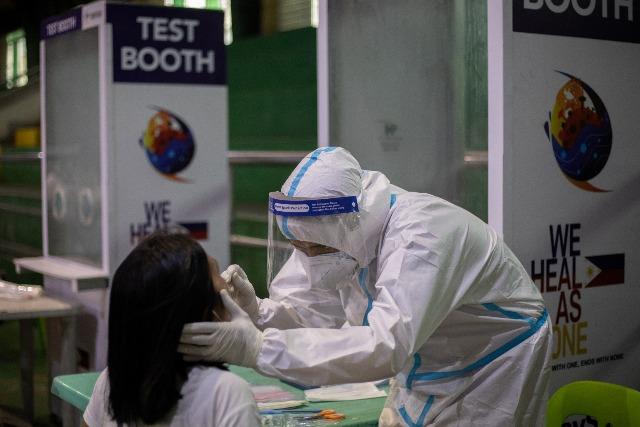DOH: Current COVID-19 surge has surpassed 2020 peak; NCR at high risk

The fresh surge in COVID-19 cases being observed across the Philippines has surpassed the peak recorded in July and August last year, the Department of Health (DOH) said Wednesday.
DOH Epidemiology Bureau director Dr. Alethea De Guzman said most of the new cases came from Metro Manila and the Calabarzon area.
“Our cases are still increasing at a fast rate. Our peak during the past week has exceeded the peak we saw in the first week of August 2020,” she said in a mix of English and Filipino during a briefing.
The Philippines averaged 5,644 daily new cases in the third week of March, which is 4.4 times higher than the figures at the start of January.
De Guzman said Metro Manila was in the “high risk” classification based on the speed of its case increase and the size of the population affected by COVID-19.
Cases in the capital region grew by 137% during March 7 to March 20 as compared to February 21 to March 6.
The "critical risk" areas within Metro Manila are Marikina, Mandaluyong, Caloocan, San Juan, Pasig, Muntinlupa, Pateros, Quezon City, and Parañaque. All other cities are at high risk.
“However, we see that the regional healthcare utilization rate is in the safe zone. This is important because our regional healthcare utilization rate serves as the buffer,” De Guzman explained.
An analysis of DOH data by the GMA News Research team found that 28 hospitals across Metro Manila no longer had available intensive care unit beds for COVID-19 patients as of March 21.
On the other hand, the DOH said Cagayan Valley, Central Luzon, Calabarzon, Western Visayas, and Caraga were at “moderate risk” for COVID-19.
New variants
In the same briefing, De Guzman said 8.7% of 4,310 samples subjected to genome sequencing tested positive for the B.1.1.7 (United Kingdom) and B.1.351 (South Africa) variants.
The B.1.1.7 has so far been detected in Metro Manila, the Cordillera region, and Regions 1, 3, 4A, 6, and 10.
The B.1.351 has been identified in Metro Manila and Regions 2, 3, 4A, 10, and 12.
Twenty-three percent of the COVID-19 cases with new variants were returning overseas Filipinos.
The country has recorded 223 B.1.1.7 cases, 152 B.1.351 cases, one P.1 (Brazil variant) case, and 104 P.3 (variant first detected in the Philippines) cases as of March 20.
“It’s important that whether we detect a variant of concern in an area or not, now that we are seeing a fast increase in cases, our regions and our local governments must ensure that our strategies are implemented quickly and effectively,” De Guzman said.
She also said clinical management remains the same even for patients with coronavirus variants.
The Philippines has recorded a total of 677,653 infections with 578,461 recoveries and 12,992 deaths as of Tuesday afternoon.
The government has tightened restrictions in Metro Manila, Cavite, Rizal, Bulacan, and Laguna in a bid to contain the surge.
Downtrend seen
OCTA Research, meanwhile, is projecting a downtrend in the number of cases in Metro Manila and the four adjacent provinces four weeks after the areas were placed in a bubble.
In its projections for the "NCR Plus" general community quarantine (GCQ) bubble released Wednesday, OCTA Research said that if the current reproduction number 2.0 will decrease to 1.5 within the two-week period from March 22 to April 4, “the trend will become downward in four weeks, and the number of new cases per day in the NCR will peak at 6,200.”
Under the "NCR Plus" bubble policy, residents of Metro Manila and adjacent provinces Bulacan, Cavite, Rizal, and Laguna are prevented from going outside the NCR Plus border unless it was an essential trip, including going to the workplace.
The "NCR Plus bubble" restriction also prevents people outside the bubble from entering the area unless it was an essential trip.
Police later clarified that residents of the said areas will not be restricted from traveling within the “bubble.” — RSJ/KBK, GMA News



